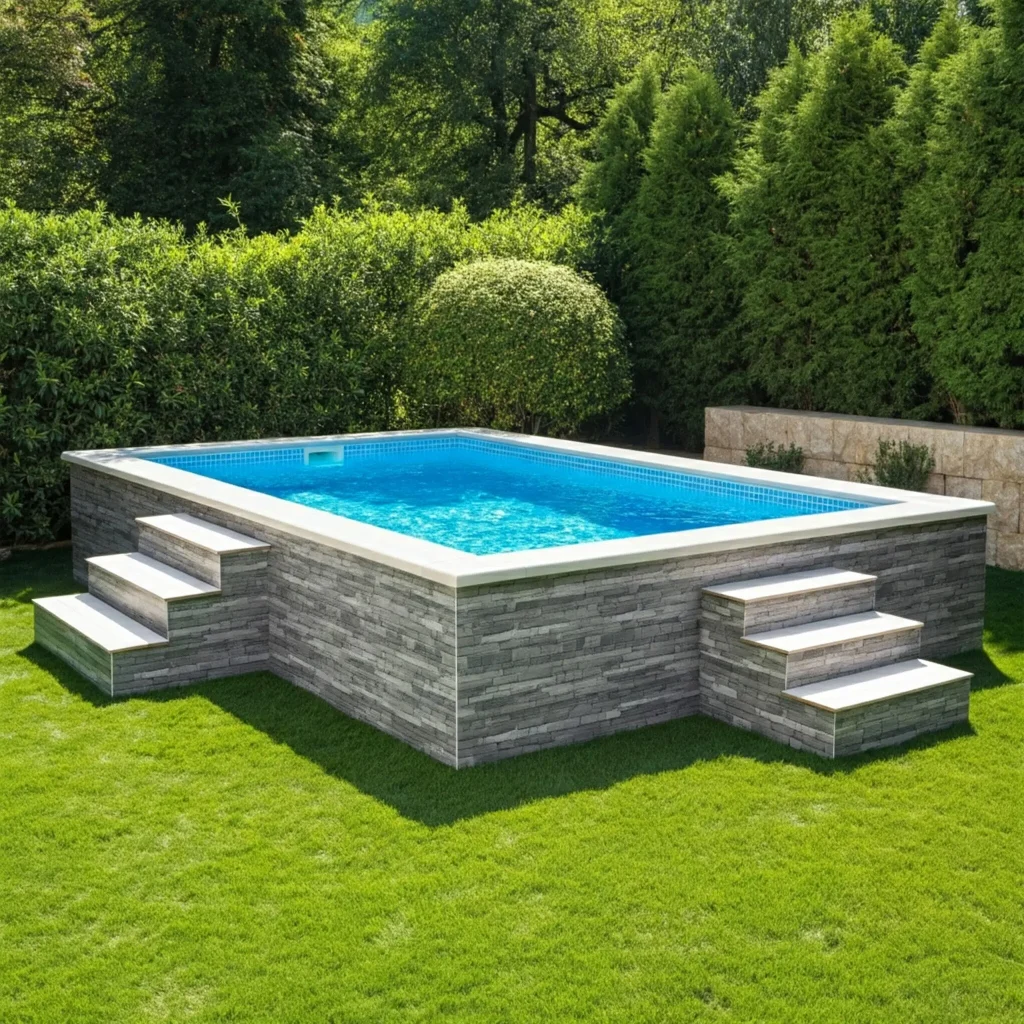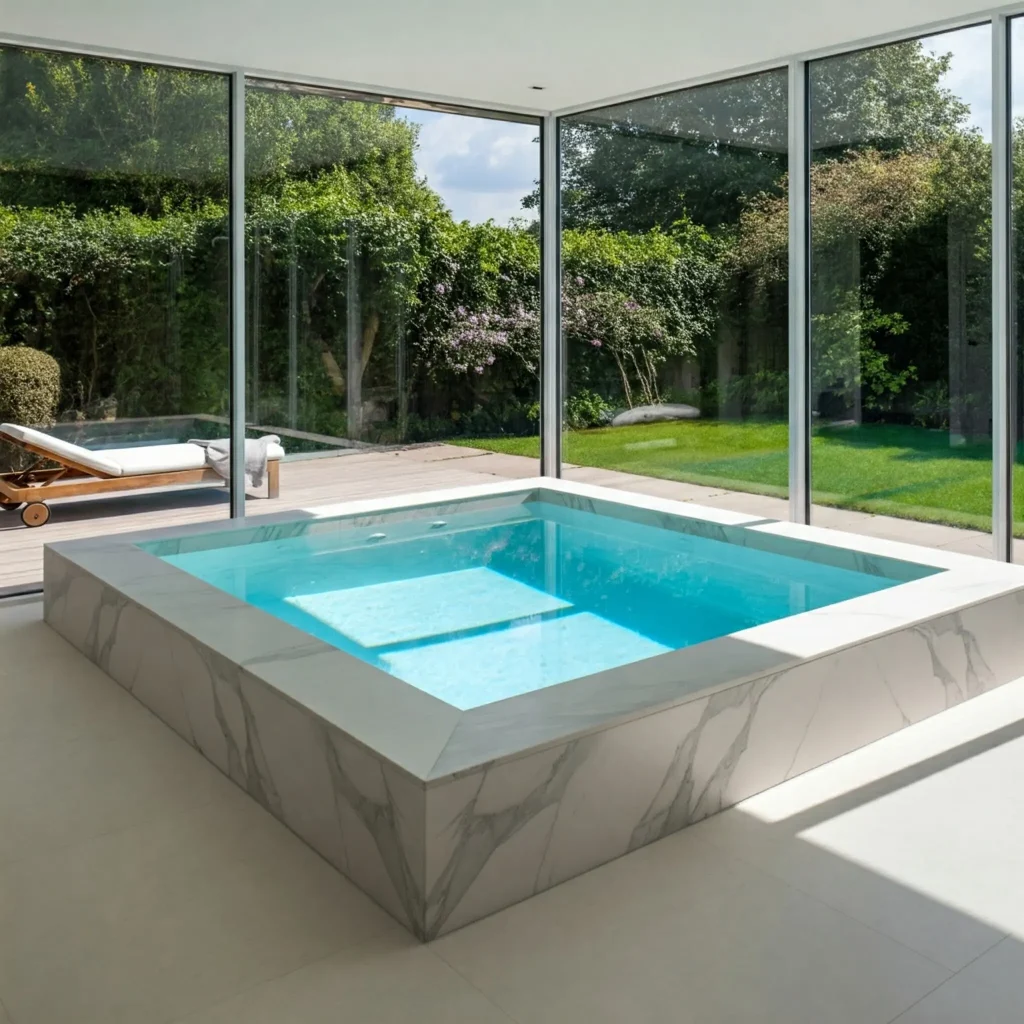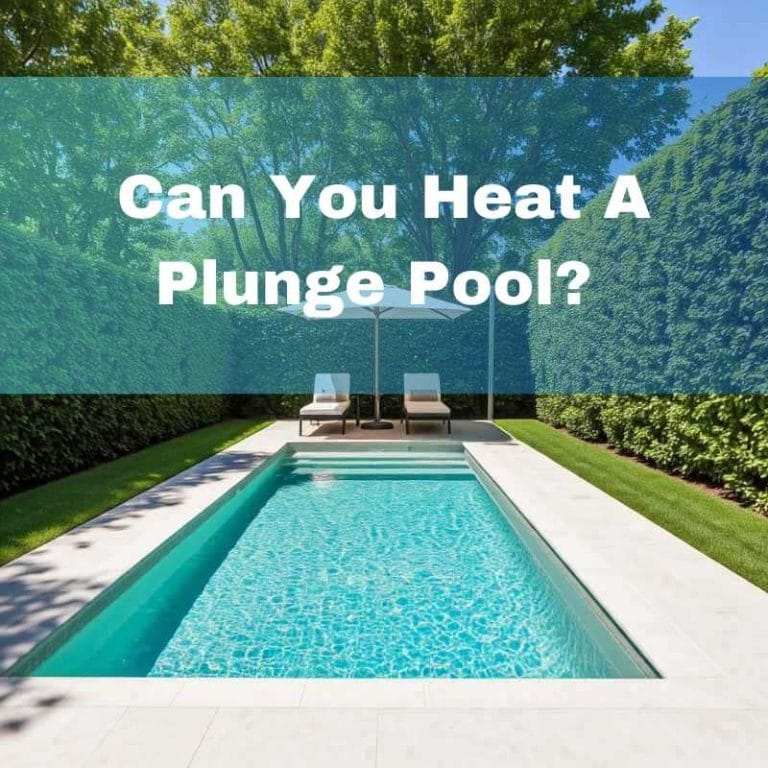At Plunge Pools Melbourne, we’ve helped hundreds of homeowners sidestep these headaches — designing and installing above ground pools that not only look great but last for years without problems.
In this guide, we’ll break down the biggest pool placement mistakes, the hidden dangers most people miss, and smarter alternatives for a backyard you’ll love. Ready to plan with confidence? Let’s dive in!
Table of Contents
ToggleImportance of Proper Plunge Pool Placement
Most people think putting in a plunge pool is as simple as picking a spot and filling it with water. Wrong. Screw this up, and you’re not just dealing with minor inconveniences—you’re looking at constant repairs, legal nightmares, and a safety hazard sitting in your backyard. Get it right, and your pool becomes a long-term asset. Get it wrong, and it’s a liability.

1. Safety Factors
Put your pool in the wrong spot, and you’re setting yourself up for danger—unstable ground, increased drowning risks, even electrical hazards. One storm, one freak accident, and you could be dealing with serious consequences. Safety isn’t optional—it’s priority #1.
2. Longevity and Maintenance
The right placement means fewer headaches. Less maintenance, fewer repairs, and a pool that actually lasts. Get it wrong? You’ll be battling shifting ground, endless leaks, and a never-ending money pit.
3. Compliance and Legal Requirements
Think you can just put your pool anywhere? Think again. Local councils have strict rules, and ignoring them could cost you thousands. Worst case? You get slapped with fines or, even worse, are forced to remove the pool entirely. Check the regulations first—because fixing mistakes later is way more expensive.
4. Financial Considerations
Bad placement doesn’t just hit you upfront—it keeps bleeding you dry. Extra maintenance, unexpected repairs, and fines all add up. Want to avoid that? Make sure your pool sits on solid, level ground, free from underground hazards.
Want a clearer idea of potential expenses? Find out how much an above-ground plunge pool can cost based on materials and installation needs so you can budget smart from the start.
Areas or Conditions to Avoid
You can’t just plonk an above-ground pool anywhere and hope for the best. Get the placement wrong, and you’re signing up for structural failures, safety nightmares, and a hefty bill to fix it all.
Uneven, Sloped, or Unstable Ground
Reasoning
Pools need a dead-flat surface. No exceptions. A slight slope today = major disaster tomorrow.
Risks
- Structural Failure – Pressure builds on one side, causing warped walls, leaks, or full-blown collapse.
- Injury Magnet – A tilted pool = slippery nightmare. Expect falls, bruises, and lawsuits.
- Voided Warranty – Most manufacturers won’t cover pools installed on uneven ground.
Marshy, Soft, or Wet Ground
Reasoning
If the ground is always soggy, your pool’s foundation will sink faster than your bank account.
Risks
- Sinking & Shifting – The pool slowly drops into the earth, wrecking its shape.
- Mould & Corrosion – Extra moisture means rust, rot, and fungi—bad for the pool, worse for you.
- Drainage Drama – Fixing it means installing a full drainage system (aka $$$).
Areas with Underground Utilities
Reasoning
Gas, water, electricity… placing a pool over underground lines is asking for expensive trouble.
Risks
- Service Disruptions – Hit a pipe? No water. Cut a cable? No power.
- Fines & Legal Mess – Digging into easements = big dollars in penalties.
- Future Repairs = Nightmare – Need to fix something below? Say goodbye to your backyard setup.
Locations with Overhead Power Lines or Tree Limbs
Reasoning
A pool under power lines is literally an electrocution trap. Trees? They’re just maintenance headaches.
Risks
- Electrocution Risk – Water + electricity = nope.
- Debris Everywhere – Leaves, branches, and dirt constantly clogging your pool.
- Structural Damage – A falling tree limb can rip a hole straight through your pool liner.
Close Proximity to Septic Tanks or Drain Fields
Reasoning
Septic systems disperse waste water underground. Pools sitting on top = a contamination nightmare.
Risks
- Ground Instability – Drain fields can’t support heavy loads. Your pool will sink.
- Health Hazards – Disturb a septic system, and you’ll get foul smells, groundwater pollution, and possible sickness.
- Sky-High Repairs – Mess up a septic system? You will regret it.
Within Setback Zones or Property Easements
Reasoning
Councils have rules. Ignore them, and you’ll be dealing with fines, forced removals, and angry neighbours.
Risks
- Fines & Penalties – Breach local laws, and they will come for you.
- Neighbour Wars – Cross property lines? Enjoy the never-ending feud.
- Access Problems – If utility companies need to dig, your pool is in their way.
Areas with Inadequate Drainage
Reasoning
Live somewhere rainy like Brisbane? Bad drainage means erosion, flooding, and structural headaches.
Risks
- Pool Instability – Waterlogged soil shifts, making your pool unstable.
- Equipment Damage – Pumps and pool walls don’t survive standing water.
- More Maintenance – Get ready for mud, algae, and constant clean-up.
On a Weak Concrete Slab or Deck
Reasoning
Not all slabs or decks are built to handle a multi-tonne pool. If it collapses, so does your investment.
Risks
- Cracks & Breaks – If the surface can’t handle the weight, it will buckle.
- Serious Injuries – If it fails while people are in the pool? Disaster.
- Expensive Fixes – Reinforcing or rebuilding = massive costs.
Safety and Regulatory Considerations
Before you even think about digging, need to know the rules. Pools aren’t just a backyard upgrade—they come with legal landmines. Ignore them, and you’re looking at fines, lawsuits, or even a forced teardown. Here’s how to avoid the nightmare.
Building Codes and Permits
Every council has different rules. Some are strict. Others? Even stricter. Melbourne alone? Multiple municipal guidelines. Bottom line: you need approval.
- Permits: Skip this, and you’re looking at massive fines—or worse, being forced to rip out your pool.
- Safety Inspections: Fencing checks, sanitation reviews, compliance reports—many areas won’t even let you fill your pool without these.
Homeowner Associations (HOAs) and Neighborhood Covenants
Living in a new estate? You might be dealing with HOAs or strict neighbourhood covenants. These can dictate:
- What type of pool you can install
- Where it can go
- How it must look
Screw this up, and you could be forced to modify—or worse, remove—your pool. And trust me, you won’t win that fight. Always check before you commit.
Insurance Implications
Insurance companies don’t just care that you have a pool. They care how and where you install it.
- Too close to power lines? Premiums skyrocket.
- Built on unstable ground? If it cracks, your provider might refuse to pay out.
If your pool placement doesn’t meet safety standards, you’re footing the bill for every problem.
Neighbor Relations
Want to start a war with your neighbour? Drop a pool right on their fence line. Noise, privacy, aesthetics—it all matters.
- Too close? Expect complaints (or worse, council intervention).
- Ignoring setback rules? You might be forced to move it—after installation. That’s expensive. And painful.
A little planning now saves you years of headaches later. Stick to the rules. Use common sense. And keep the peace.
Pre-Installation Checks and Preparation
Want to avoid a five-figure mistake? A structural nightmare? A pool that sinks, cracks, or floods your yard? Then don’t wing it—prep like a pro.
Site Search and Inspection to Install
Your backyard isn’t just a patch of dirt—it’s either the perfect foundation or a disaster waiting to happen. Here’s what you must check before even thinking about installation:
- Slopes Kill Pools – Even a tiny incline = uneven pressure, cracked walls, leaks.
- Soft Ground = Sinking Disaster – If it feels spongy now, imagine it with 20,000 litres of water.
- Tree Roots Ruin Everything – They shift, crack, and destroy your pool over time.
- Shortcut: If the ground isn’t rock solid, it’s not pool-ready.
Landscaping Considerations
Stubborn about a tricky spot? Fine. But get ready to modify the land.
- Level the Ground—No Excuses – Even a small slope will wreck your pool long-term.
- Sort Out Drainage – Retaining walls, drainage channels—whatever it takes to prevent flooding.
- Tree Removal? Know the Rules – Some are protected. Councils love issuing fines.
Professional Assessment
Not sure? Get an expert. A pool specialist or structural engineer can save you from afinancial disaster.
- Soil Stability Check – Weak ground? Say hello to shifting, cracking, and collapse.
- Drainage Fixes – Poor drainage = sinkholes, corrosion, standing water nightmares.
- Structural Advice – Installing on a deck or slab? It better be reinforced, or it’s a ticking time bomb.
Alternative Solutions or Locations
Your dream pool spot might be a ticking time bomb. Bad drainage. Shifting ground. Endless maintenance headaches. But that doesn’t mean you’re screwed—you just need a smarter plan.
Ground-Level Backyard Spaces
A level patch of yard is the simplest, most hassle-free option. Easy to prep. Easier to maintain. Plus, it keeps the pool on solid ground—literally.
And here’s the kicker: placement matters. Too much sun? You’re swimming in a hot tub by January. Too much shade? Freezing water, even in summer. Find the balance.
Patios or Decks Built to Code
Thinking of slapping a pool on your deck? Think again. Water is heavy. A full pool? Ridiculously heavy. Most decks aren’t rated for that load. The fix? Reinforce it—or build new with the right specs.
Do it right, and you’ve got a sleek, resort-style vibe that flows with your outdoor space. Do it wrong, and you’ve got a disaster waiting to happen.
Dedicated Pool Pad
A reinforced concrete pad is the gold standard for long-term stability. Yeah, it costs more upfront. But it means zero movement, no cracks, and no expensive fixes down the track.
Hiring Landscape Professionals
Not sure if your yard can handle a pool? Get an expert. A solid landscaping pro will:
- Pick the best spot based on your terrain.
- Solve drainage issues before they wreck your setup.
- Make sure your pool actually looks like it belongs there.
Bottom line: A little upfront planning saves you thousands in repairs and headaches later.
Before finalising your setup, it’s also important to understand the downsides and limitations of above-ground pools you need to know — so you can plan smarter and avoid regrets later.

Conclusion
Bottom line—pick the right spot for your above-ground pool, or you’ll be dealing with fines, flooding, and constant upkeep headaches. Evaluate your space, especially check the pitch of land leading to the swimming pool area, and make sure it’s close enough for convenience and safety but far enough from things like a septic system or property lines. Safety is the one thing that is paramount, so follow local building department codes and install it right the first time.
Want it done right the first time? Call Plunge Pools Melbourne. We know the regs, the fencing laws, and the shortcuts that save you headaches. From design to full installation, we make sure your pool isn’t just good—it’s rock-solid.
People Also Ask
Can an above ground pool be placed on a slight slope?
Technically, yes. But should you? Probably not. Even a small slope can stress the frame, cause leaks, and lead to costly repairs. Want to do it right? Get a pro to check your site. They’ll tell you if levelling is safe—or if you’re risking a major headache down the line.
Do I need a permit for an above ground pool in my area?
Most likely. Councils have their own rules, but expect to need permits for fencing, safety compliance, and structural integrity. Skip it, and you’re looking at fines or even forced removal. Save yourself the headache—check the regs before you start digging.
What kind of base material should I use under my pool?
Compacted sand works. Foam pads add cushion. Concrete? Solid choice—but only if it’s reinforced. A weak slab will crack under the weight, and then you’re in trouble. Get the base right, or you’ll be regretting it every summer.
How far should an above ground pool be from my house?
Councils set the rules—usually a few metres away, minimum. And no, you can’t ignore this. Install too close, and you could be forced to move it. Do it once, do it right, keep the inspectors (and your neighbours) off your back.
Do Above Ground Pools Need a Fence?
Yes. Nearly everywhere requires it for safety. If your pool’s over a foot high, fencing laws kick in. Got a deck or path leading to it? You might need extra barriers. Skip this, and you’re asking for trouble. Check local codes before you build.





